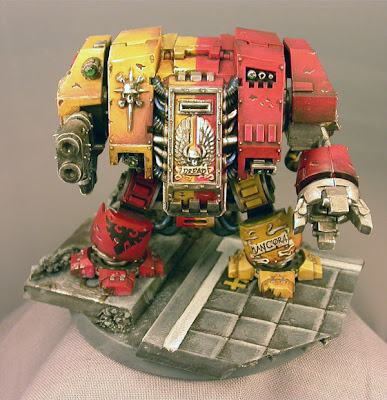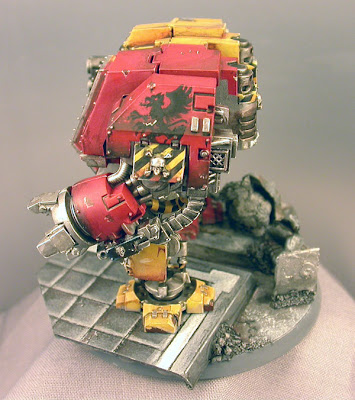Sometimes the next step has to be a running leap.
1. Do your homework
If you want to improve, you need a goal. A tried and true way to know what you're aiming for is to study the masters. In the case of toy soldiers, golden demon award winners are a great place to start. These dedicated artists have spent hundreds of hours planning, working, reworking, and re-reworking their submission. Learn from continual observation, and incorporate the techniques and ideas you like the most.Good artists borrow. Great artists steal.
While researching Dreadnought paintjobs, I made a list of common elements among the top minis. This became my go-to guide; a miniature would not be complete until the checklist was filled.
2. Reflect
Remember, you are always learning, most of all from direct experience. Self-analysis is a great tool to reveal areas that need improvement. If something about your work isn't up to par, figure out why and take appropriate steps to fix it. If you're fortunate enough to have someone else to provide a critique, so much the better. That being said, learning how to look at your own work objectively is a crucial skill. Be honest with yourself, especially if it makes you uncomfortable; that means you're hitting on something important.I painted this Black Templar Dreadnought a year ago. It was an average paintjob that relied on additional bits and freehand designs to compensate for a lackluster base coat. Taken on their own, the panels of armor were flat and boring; the overall color scheme uninspired. The base color was taupe for god's sake. Lesson learned: a model has to be able to hold it's own.
3. Jump!
It doesn't matter how difficult the technique is, just do it. It might work, it might fail miserably, but you will learn volumes.The fear of failure is paralyzing. Many would rather commit to a paintjob they know will turn out okay rather than try for a new technique that might ruin the model.
Enjoy the mistakes; they are the stepping stones to greatness.
Painted battle damage lent another dimension to the armor. Increased shading and highlighting gave the flat panels depth. Clean freehand and basecoating created a professional finish. In the fine arts, this is referred to as gestalt theory, the unified whole being greater than the sum of it's individual parts. By improving the weakest elements of my painting, I had raised the quality of the strongest.
Take the time to challenge yourself and there will be no limit to what you can achieve.



